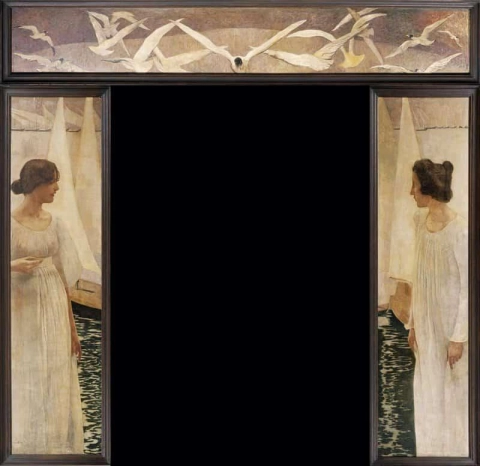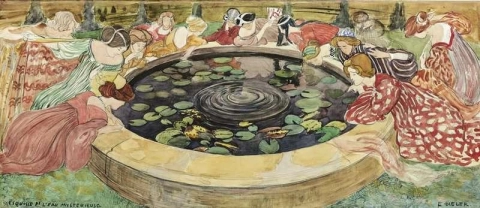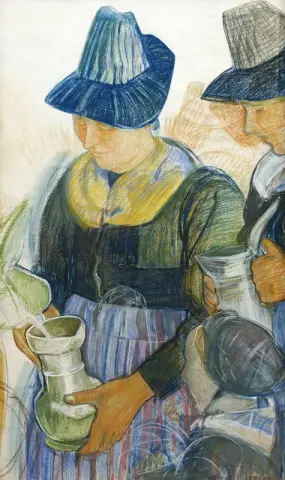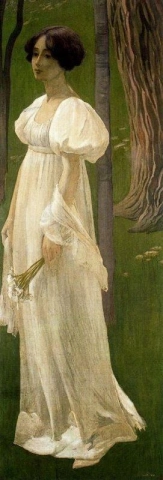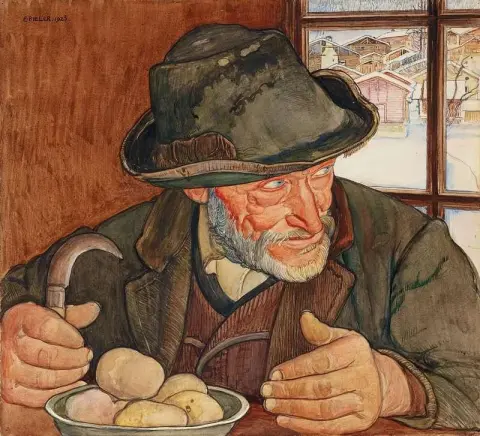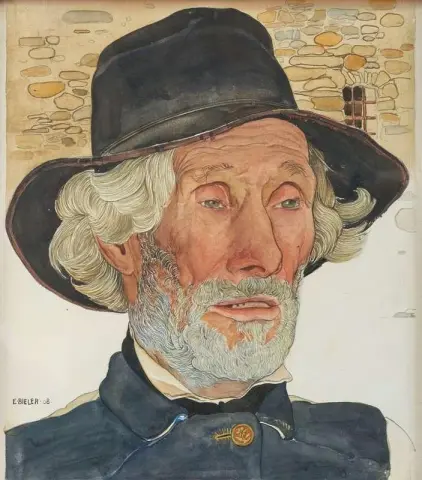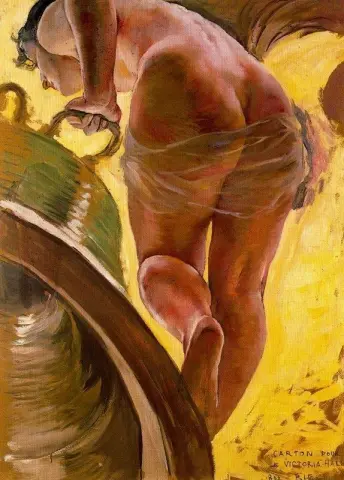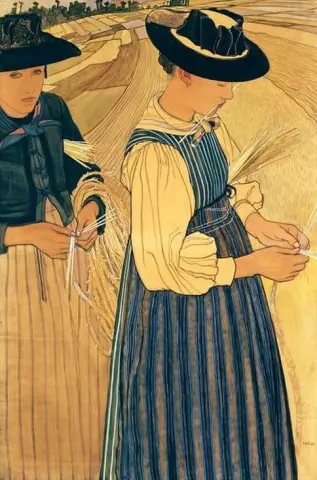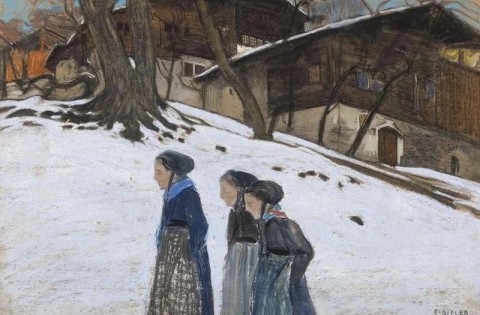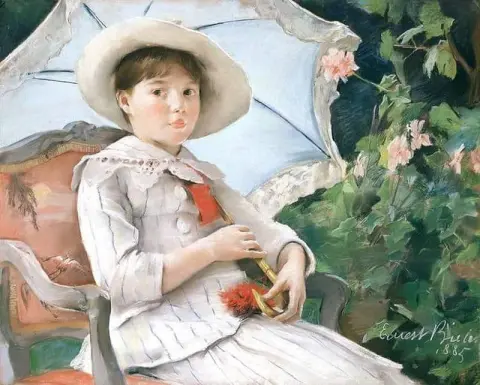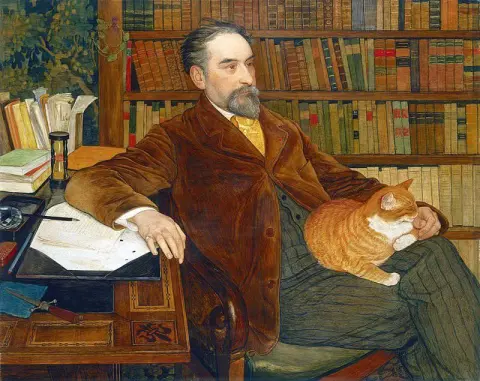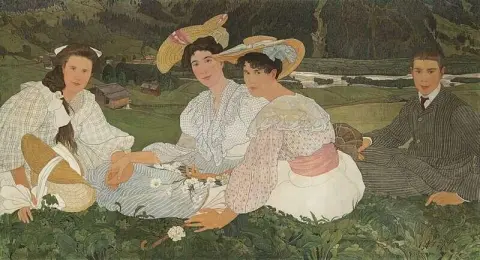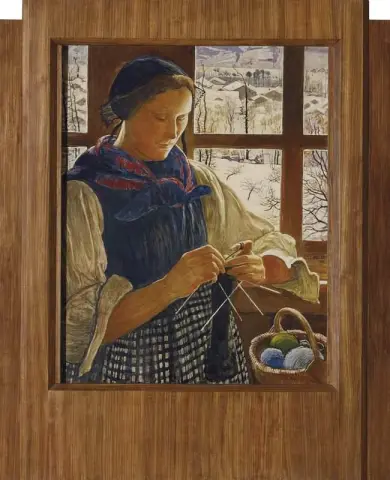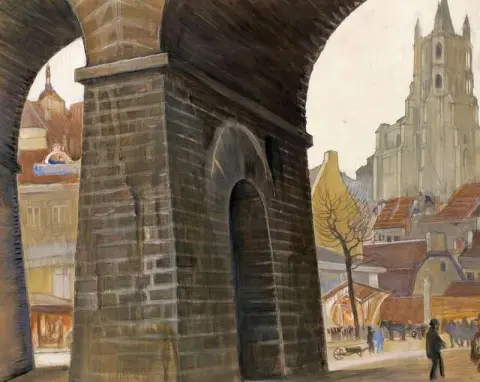

Hand painted reproductions of Ernest Biéler
Ernest Biéler: A Renowned Swiss Painter of Light and Landscape
Ernest Biéler (1863–1948) was a Swiss painter celebrated for his mastery of light, landscapes, and the Swiss countryside. His work captures the serene beauty of rural Switzerland, focusing on both the natural world and the human figures intertwined with it. Biéler's distinctive style, which evolved throughout his career, established him as one of Switzerland's most respected artists of the late 19th and early 20th centuries. His contributions to Swiss art reflect a commitment to precision, atmosphere, and a deep connection to his homeland.
Early Life and Education
Born in La Chaux-de-Fonds, Switzerland, in 1863, Ernest Biéler grew up in a region known for its strong ties to the watchmaking industry. He was encouraged from an early age to pursue the arts, and his family supported his studies in painting. Biéler attended the School of Fine Arts in Geneva, where he honed his skills and gained exposure to the latest artistic movements of the time.
After completing his studies in Switzerland, Biéler sought to broaden his artistic horizons by traveling to Paris. There, he studied at the Académie Julian and worked closely with prominent artists of the time. In Paris, Biéler encountered the vibrant French art scene, particularly the works of the Impressionists, whose use of light and color would later influence his own approach to painting.
Artistic Development and Style
Ernest Biéler’s style was shaped by his immersion in both the Swiss landscape and the French artistic movements of the late 19th century. His early works were marked by a realism that captured the details of the Swiss countryside with a high level of technical precision. Over time, however, Biéler’s work evolved, incorporating elements of Impressionism, especially in his treatment of light and color.
Biéler’s landscapes are characterized by their luminous quality, with light playing a central role in his compositions. His brushstrokes were fluid and expressive, allowing him to capture the ever-changing light of the Swiss Alps and rural life. He often painted scenes of farmers, villages, and the natural world, creating works that conveyed a sense of peace and timelessness.
While Biéler’s landscapes remain the most recognized aspect of his career, he also created portraits and genre scenes that were notable for their intimate portrayal of daily life. His portraits often displayed the same attention to light and atmosphere, with his subjects rendered with a soft, almost ethereal quality.
Themes and Significance
The central theme of Biéler’s work was his relationship with the Swiss landscape. He sought to capture the natural beauty of his homeland, particularly the majestic mountains and lush valleys of Switzerland. His paintings evoke a sense of tranquility, celebrating the simple yet profound beauty of rural life.
Biéler’s use of light was especially significant in his work. He often painted outdoors, directly observing nature and capturing the fleeting moments of sunlight that transform the landscape. His landscapes, often bathed in warm golden light, convey a sense of harmony between human beings and nature. Biéler’s ability to depict the softness of light and shadow gave his work a distinctive, atmospheric quality that set him apart from his contemporaries.
In addition to his landscapes, Biéler's genre scenes often depicted the everyday lives of the people in the rural villages he knew so well. His intimate portraits of farmers, children, and villagers are marked by a quiet dignity, reflecting Biéler’s respect for the working class and his commitment to depicting the human experience with sensitivity.
Achievements and Influence
Ernest Biéler’s career spanned several decades, during which he exhibited his work in numerous galleries across Europe. He was celebrated for his technical skill, particularly his ability to capture light and atmosphere. Biéler’s paintings were widely recognized in Switzerland, where he became a prominent figure in the art scene. He was also well-regarded abroad, with his works displayed in Paris and other major European cities.
Biéler's influence extended beyond the art world, as he was also an educator, teaching at the School of Fine Arts in Geneva for many years. His legacy as both a painter and teacher helped shape the direction of Swiss art in the early 20th century. While his work is often associated with the Symbolist movement, his commitment to realism and his focus on the natural world set him apart from other artists in the genre.
Legacy
Today, Ernest Biéler’s legacy as a Swiss painter is celebrated for its dedication to capturing the beauty of the Swiss landscape and the human experience within it. His works remain highly regarded by collectors, art institutions, and museums worldwide, with many of his landscapes and portraits housed in Swiss museums, including the Musée d'Art et d'Histoire in Geneva.
Biéler’s contribution to Swiss art continues to be appreciated for its warmth, technical precision, and emotional depth. His landscapes, in particular, serve as visual records of a rapidly changing Switzerland, capturing a sense of national identity and pride in the natural world.
Where to Find Reproductions of Ernest Biéler's Art
For those interested in bringing the serene beauty of Ernest Biéler’s Swiss landscapes and intimate portraits into their homes, POD (Painting On Demand) offers a selection of high-quality oil painting reproductions. These reproductions provide an authentic way to experience the calming atmosphere and vibrant light that Biéler so masterfully captured in his works.
Imagine owning an original-style painting by one of the greatest artists in history. At POD, we offer you the chance to make this dream a reality. Each canvas is faithfully reproduced down to the smallest detail, allowing you to experience the beauty of the artist’s vision in your own home.
Our reproductions are crafted by experienced painters using the finest materials and time-honored methods. We are committed to delivering works of exceptional quality that will inspire and bring joy to your family for generations to come.



